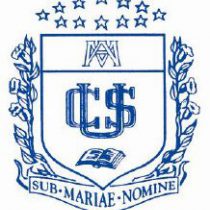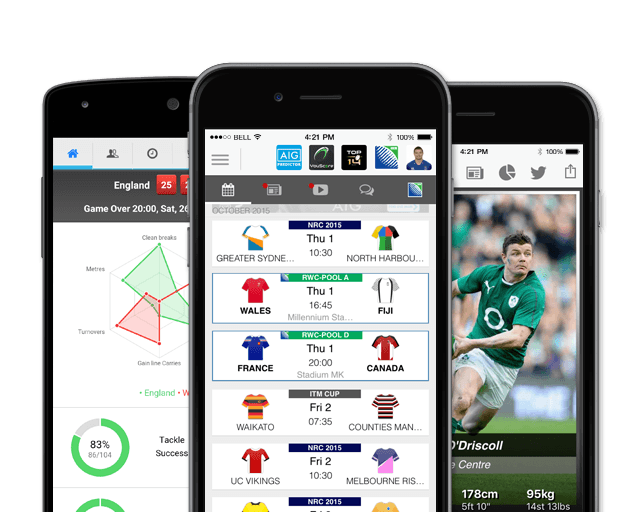SA Rugby announces a 'creative' overhaul of their contracting model
- 1383

The South African Rugby Union has revamped it's contracting system going forward.
In the release confirming the news, the model has been described as a creative overhaul of the South African player contracting model will lead to improved use of resources, greater national and provincial alignment and improved succession planning at Springbok level, it was announced on Friday.
It goes on to state that the ground-breaking system was achieved through unprecedented co-operation between SA Rugby, the rugby employers (the South African Rugby Employers’ Organisation, SAREO) and the players’ organisation (MyPlayers).
Key Notes
· SA Rugby, provincial unions and MyPlayers hammer out new system
· Elite playing talent to be prioritised
· Player budget and squad size caps agreed
· National coach to have input into player management and preparation
This is the first time since rugby turned professional in 1996 that SA Rugby will no longer directly contract Springboks while in a second major change, provincial unions have agreed to a cap player budgets.
“I would like to thank and congratulate SAREO, MyPlayers and Rassie Erasmus, our director of rugby, for setting aside purely sectional interest to come up with a new model that we believe will have long term benefits for all in rugby,” said Jurie Roux, CEO of SA Rugby.
“The existing model plainly was not working; the rugby economy could not continue to support such a large, fully professionalised workforce while the strategy to retain top players in South Africa had become too narrowly focused.
“The new model will see our best players properly looked after from a payment point of view – in the South African context – as well as from a player management and development point of view. At the same time it will improve the financial sustainability of unions by controlling budgets and sharing out the Springbok payment budget through the unions to a broader pool of players.”
“There will be challenges and growing pains I am sure, but for the first time the three constituent parties in the player journey – the players themselves, the employers and the national body – have been able to sit down, take a strategic view and come up with what we believe will lead to a more sustainable future for the game.”
Key outcomes of the agreement are:
· Joint development of players of national interest (PONI) by unions and Springbok management
· Caps on squad size and player budgets per union
· Identified categories for payment: professional; semi-professional and development players (21 or younger who have not been offered a professional contract)
· And a “commitment clause” by which young players will be rewarded for longer term commitment to South Africa.
“The players fully support the model as it provides a clear career development pathway and greater certainty around contract renewals for players, while financial resources with regards to player salaries will be optimised,” said Eugene Henning, CEO of MyPlayers.
“The model is a positive development for the industry and should contribute to the long-term health of the game”
The overhaul follows a strategic assessment of the current contracting system against a backdrop of rising player costs, constrained union incomes and the ongoing departures overseas of South African players, said Barend van Graan, CEO of SAREO.
“The new model promises to overcome these challenges and to create a more sustainable contracting system tailored to the specific needs of the South African rugby industry,” he said.
“A complementary series of mechanisms are at the heart of the new contracting system. All player contracts – including those of Springboks – will be held by the provinces as the primary employers of professional rugby players.”
Rudolf Straeuli, SAREO chairman, said: “Players required for Springbok duties will be ‘seconded’ by the provinces to SA Rugby. The national Director of Rugby will identify Players of National Interest (PONI Players) at the various provinces, and will cooperate with those provinces, through an agreed ‘high-performance programme’, to ensure that PONI players are contracted and deployed to the benefit of both the provinces and the Springboks.”
Straeuli said that key to the new contracting model would be a reliance on fewer contracted players and greater use of younger “development players” and club players (on a short-term, injury replacement basis).
To deliver the player reduction, limits have been agreed on the number of contracted players per union and an overall remuneration limit.
The player categories are:
· Professional players (full-time players) who will be eligible to play in Vodacom Super Rugby, Guinness PRO14 and Currie Cup Premier Division competitions;
· Semi-professional players (part-time rugby players) who may only be contracted to play in the Currie Cup First Division and in the SuperSport Rugby Challenge;
· And development players (21 or younger who have not been offered professional contracts) who will play in the Under-21 and Under-20 competitions. However, they may be made available as temporary replacements for professional and semi-professional players;
· Club players may be contracted as temporary replacements for injured professional and semi-professional players.
Critically, agreement had been reached on squad size and player salary bill:
· Super Rugby, PRO14 or Currie Cup Premier Division unions may not contract more than 45 professional players and have a salary bill greater than R60m (which will be phased in over three years) or of more than R15m in the case of the Pumas and Griquas.
· Currie Cup First Division teams may contract no more than 23 professional players or more than 40 players in total (including semi-professional players). Their remuneration cap is set at R6m.
· Unions may contract an unlimited number of development players providing they stay within a cap of R10m for Super Rugby and PRO14 unions (reducing to R7,5m in year two) and R1m for all other teams.
The unlimited development player pool is designed to provide a reservoir for identifying and nurturing young talent within financial limits. Promising development players will be utilised in the senior competitions to temporarily replace players who are injured or unavailable, preparing them for a senior career.
And an innovative new initiative has been designed to encourage young talent to commit to South Africa. A player receiving a contract for the first time to play Vodacom Super Rugby or Guinness PRO14 will automatically commit to make his services available to play rugby in South Africa for a period of three years provided the player’s contract is renewed on the same or better terms on or before a specific date during this time. If such renewal offer is not made to the player on or before the specified date the player will have no obligation to play rugby in South Africa.
This principle is only applicable to players entering the professional rugby playing system from November 2019.
“The major benefit for the player is that it gives him clarity and certainty on his future, rather than the current situation where contracts expire in October with players not knowing if they’ll receive an offer from their franchise or should start looking elsewhere,” said Henning.
If the players is chosen to represent the Springboks in that time, the option clause extends to a fourth year.
Rassie Erasmus, SA Rugby’s Director of Rugby said the new contracting approach was designed to create a system to identify, manage and reward the best players to the benefit of the Springboks and the franchises.
“SA Rugby will identify and help nurture young talent from the schoolboy ranks and contribute to their remuneration through the unions,” said Erasmus.
“This way we will have upwards of 60 Players of National Interest involved in Springbok planning in an integrated plan with their contracting union.
“It broadens the Springbok pool and will work to encourage our players to remain in South Africa to pursue their Springbok dream. It also gives the national coaches the opportunity to work with the franchise coaches on honing the players’ skills on an on-going basis.”
The new model has already been agreed by SAREO members and will take effect at the start of the new contracting cycle at the end of the 2019 season.













